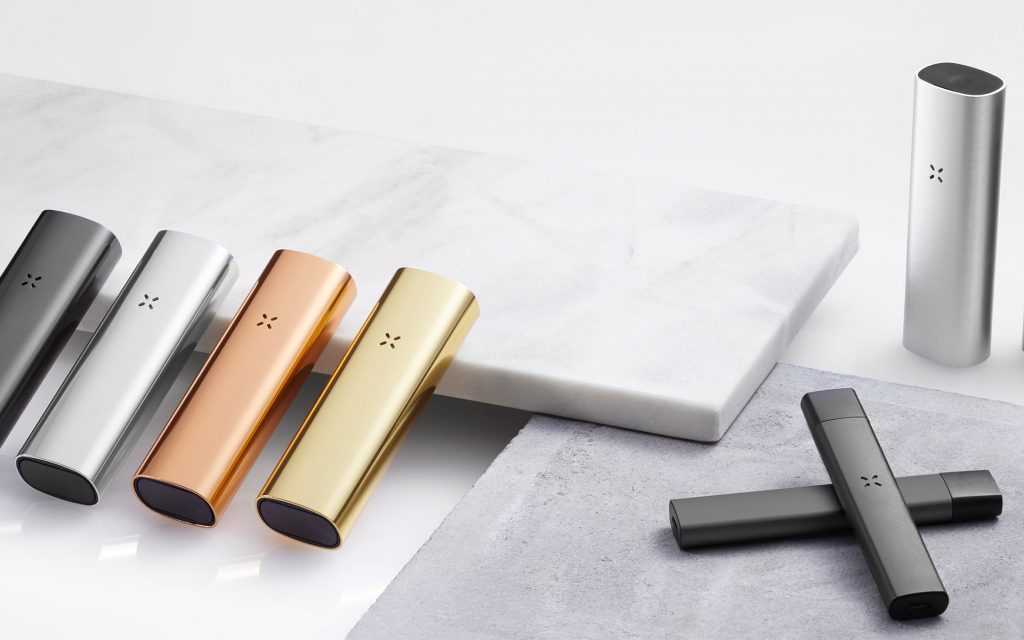This article is sponsored by PAX Labs. With over one million devices sold, PAX premium loose leaf and oil vaporizers apply advanced technology and intuitive design for an unforgettable vapor experience.
The function of a portable vaporizer is to provide a simple, easily transportable vehicle for on-the-go consumption of cannabis flower, concentrates, or both. As the cannabis legalization movement has progressed, vaporizer technology has helped revolutionize many facets of cannabis consumption, and today, vaporization is one of the easiest, safest, and most versatile ways to consume cannabis. This can be attributed to many major advancements in vaporizer technology over the past few years.
To understand the cutting-edge vaporizers on the market today, it’s important to understand the basics of how a vaporizer functions.
Vaporizer Parts and Components

Through either conductive or convective heating methods, vaporizers operate by elevating heat in a controlled chamber to temperatures capable of volatilizing cannabinoids and terpenes, thus converting them into a gaseous state to be inhaled. Conductive heating mechanisms heat raw cannabis and concentrates through direct contact with them, while convective units utilize the transfer of heated air to heat these materials indirectly.
Handheld vaporizers are powered by lithium ion batteries, which are capable of offering the power needed to elevate temperatures within the chamber to levels required for vaporization. These batteries are intended to avoid temperatures high enough to induce combustion, or burning, of the plant or concentrate matter.
The major components of portable vaporizers include:
- TANK – Sometimes referred to an an oven, skillet, or cartridge, this part of the vaporizer is the mechanism that holds the starting material. Some units have interchangeable tanks, capable of housing both concentrates and flower. Others are intended specifically to hold one or the other. Smaller wax pens, for their part, are designed for use with screw-on cartridges that have been pre-loaded with cannabis concentrates.
- BATTERY – Almost every portable vaporizer utilizes a lithium ion battery as its power source, since these batteries are both rechargeable and powerful enough to elevate the temperatures in the handheld unit to as high as 400 degrees F. Cannabinoids and terpenes have variable boiling points ranging from the low 200s to just over 400 degrees F, not far beyond the point that combustion of the plant material begins.
- SENSOR – Handheld vaporizers vary in their software, but all units are at the very least equipped with a sensor of some sort. Some models are more operationally nuanced than others, coming equipped with a more advanced sensor capable of more complex functions (such as temperature variability or Bluetooth compatibility). The main function of a sensor is to communicate with the atomizer.
- ATOMIZER – Portable vaporizers generate their heat through atomizers (or variations of the same, including clearomizers or cartomizers, which are chosen depending on the viscosity of the materials – specifically concentrates – that they will work with). Atomizers pull power from the lithium ion battery at whatever rate the sensor allows, and use it to create heat. Some handheld vaporizers utilize conductive heating technology, which transfers heat directly to an oven or skillet, warming the starting material. Other vaporizer units utilize convective heating to warm air, which is passed through a controlled chamber to indirectly heat the starting material.
- MOUTHPIECE – Airflow is directed through the tank or oven and out through a mouthpiece where it is inhaled. Often, mouthpieces are detachable from the remainder of the unit, which allows for easy cleaning. The size and shape of a mouthpiece can differ between portable vaporizer units.
Differences Between Dry Herb and Concentrate Vaporizers

It is important to note that not all vaporizers can handle both concentrates and flowers. Some units are designed specifically for flowers, where others are to only be used with concentrates. Furthermore, some models are designed to allow users to provide their own concentrates while others require pre-filled disposable cartridges. While cartridges provide a solution for those intending to solely consume pre-packaged concentrates, they do not bode well for versatility.
For cannabis flowers, conductive heating is most often utilized. The lithium ion battery powers a conductive atomizer to heat the oven or skillet to temperature, vaporizing the compounds from the flowers in seconds. Some vaporizers, such as the PAX 3, have additional temperature control features, which can cool or boost heat depending on speed of inhalation, ensuring optimal performance. Other handheld vaporizers have as few as one static temperature setting, limiting any customization of effects via temperature.
Choosing the Right Vaporizer

Choosing a style of vaporizer that is right for you will come down to preference, and every model will have its own strengths and limitations. Fortunately, there are many great handheld vaporizer options available that work with both flowers and concentrates, thus minimizing limitations. Systems such as the PAX 3 include an insert which can be used with a wide variety of extracts, or removed to accommodate raw flowers. Temperature can also be fine-tuned with the PAX 3 Vapor App, which means you can experiment with flavor profiles and levels of vapor production. The portable vaporizer category as a whole offers the most discreet, convenient way to consume your material.
Regardless of the choice you make, every enthusiast owes it to themselves to explore the ever-evolving world of portable vaporizer technology.
To learn more about PAX vaporizers, please visit PAX.com.


